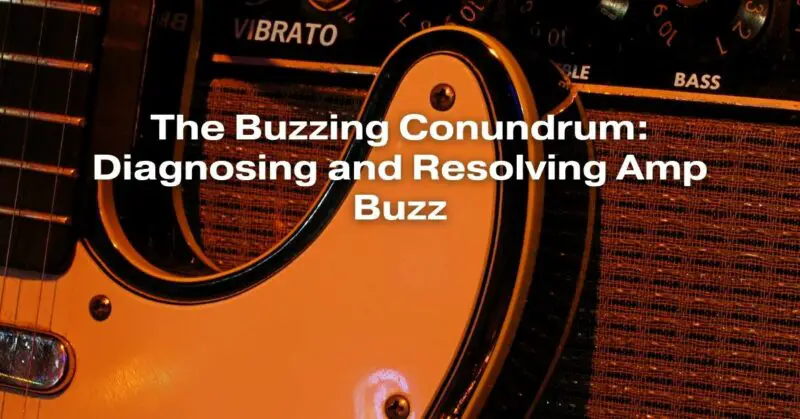The unmistakable buzz emanating from your amplifier can be as frustrating as it is baffling. Musicians and audio enthusiasts alike often find themselves entangled in the enigma of amp buzz. This unwanted noise can mar the beauty of your music and drive even the most patient souls to the edge of insanity. In this comprehensive guide, we will explore the various causes behind amp buzz, methods to diagnose the issue, and effective ways to resolve it.
Understanding the Buzz: What Causes Amp Buzz?
Amp buzz is typically caused by interference, grounding issues, or faulty components within the amplifier or its connected peripherals. Here’s a breakdown of common culprits:
- Poor Grounding: Inadequate grounding can lead to a ground loop, where multiple paths to ground create a loop, inducing a hum or buzz.
- Interference: Electronic devices, fluorescent lights, and even smartphones can introduce electromagnetic interference, resulting in an audible buzz.
- Faulty Cables: Damaged or low-quality cables can transmit unwanted noise, including buzz, into your amplifier.
- Tube Amp Issues: Tube amplifiers, while beloved for their warm tones, can be susceptible to buzzing due to failing tubes, improper biasing, or loose components.
- Single-Coil Pickups: Electric guitars equipped with single-coil pickups are notorious for picking up electromagnetic interference, manifesting as a buzz.
- Power Supply Problems: Inconsistent or low-quality power supply can lead to voltage fluctuations, causing audible buzz in the audio signal.
Diagnosing the Buzz: Where to Start?
When faced with amp buzz, a systematic approach to diagnosis is crucial:
- Isolate the Source: Begin by disconnecting all peripherals and testing the amp with a different guitar and cable. This helps identify whether the issue lies within the amplifier or its connections.
- Check Cables and Connections: Inspect all cables and connections for wear, tear, or loose connections. Replace damaged cables and ensure secure connections between the guitar, pedals, and amplifier.
- Test with Different Guitars and Pickups: If the buzz persists, test the amp with guitars equipped with different pickups (single-coil vs. humbucker) to see if the type of pickups is contributing to the noise.
- Eliminate Interference: Move the amp and its components away from potential sources of interference like smartphones, Wi-Fi routers, and fluorescent lights.
- Grounding Check: Verify the grounding of your electrical system and ensure that all components are properly grounded. Using a ground lift adapter can sometimes help in resolving ground loop issues.
- Tube Amp Inspection: If you own a tube amp, visually inspect the tubes for signs of wear or damage. If necessary, have the tubes tested and replaced by a professional.
Resolving the Buzz: Effective Solutions
Once the source of the buzz has been identified, there are several strategies to effectively resolve the issue:
- Upgrade Cables: Invest in high-quality, shielded cables to minimize interference and ensure a clean signal transmission.
- Use Noise Gates: Noise gate pedals can be employed to cut off the signal when it falls below a certain threshold, effectively eliminating buzz during silent periods.
- Isolation Transformers: Placing an isolation transformer between the amp and the power source can help eliminate ground loop issues by breaking the ground connection.
- Humbucking Pickups: Consider installing humbucking pickups, which are designed to reduce electromagnetic interference and, subsequently, the buzzing sound.
- Professional Maintenance: For tube amps or complex setups, seeking the expertise of a professional technician can be invaluable. They can diagnose and repair intricate issues with precision.
- Proper Power Supply: Ensure your amp is receiving consistent and clean power. High-quality power conditioners can help regulate voltage, minimizing fluctuations that lead to buzz.
Conclusion
Amp buzz, while exasperating, is a challenge that can be overcome with patience and systematic troubleshooting. By understanding the underlying causes, methodically diagnosing the problem, and employing appropriate solutions, you can enjoy your music without the intrusive buzz, allowing your creativity to flow uninterrupted. Remember, if in doubt, seeking the assistance of a professional is always a wise choice, ensuring your gear remains in optimal condition for years to come.

